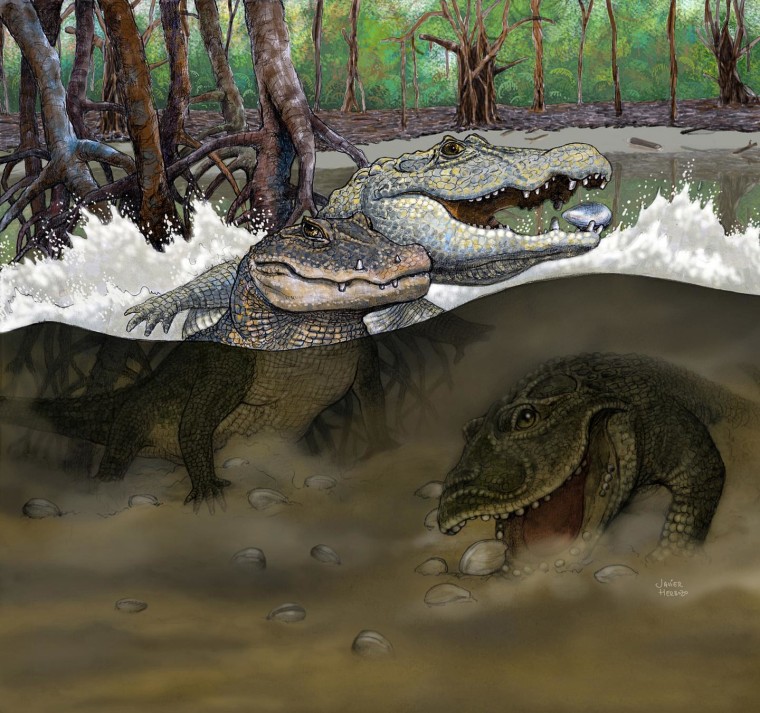How would you like to dip your toes in a swamp with seven different crocodilian species, including two 26-foot (8-meter) monsters, all living side by side and eating just about anything that moves? That is what life was like in the lush Peruvian Amazon basin 13 million years ago.
The scene featured Earth's all-time croc bloc: the most crocodilian species dwelling in the same place and time in our planet's history, scientists said Tuesday.
The researchers unearthed the croc remains in two small fossil bone beds near the northeastern Peruvian city of Iquitos. One of the strangest was Gnatusuchus pebasensis, a 5-foot (1.6-meter) caiman with a fondness for shellfish. Its shovel-like snout let it bury its head in muddy wetland bottoms and root around for prey. Its bulbous teeth were perfect for crushing shells of mollusks like clams.

"This highly specialized anatomy and lifestyle was previously unknown in any other crocodile," said paleontologist John Flynn of New York's American Museum of Natural History.
The findings, published in the Proceedings of the Royal Society B, are helping scientists better understand both the origins of modern Amazonian biodiversity and the ancient assortment of life before the Amazon River formed 10.5 million years ago.
When these crocs ruled, the region boasted immense wetlands abounding with lakes, swamps and rivers. The researchers said the seven species could coexist because they shared an elaborate environment with plenty of food and were not all chasing the same prey.
IN-DEPTH
- What Big Teeth That Dog-Faced, Dino-Eating Croc Had!
- 900-Pound Ancient Crocs Ate Turtles for Breakfast
- Ancient Humans Faced a Crocodile With Horns